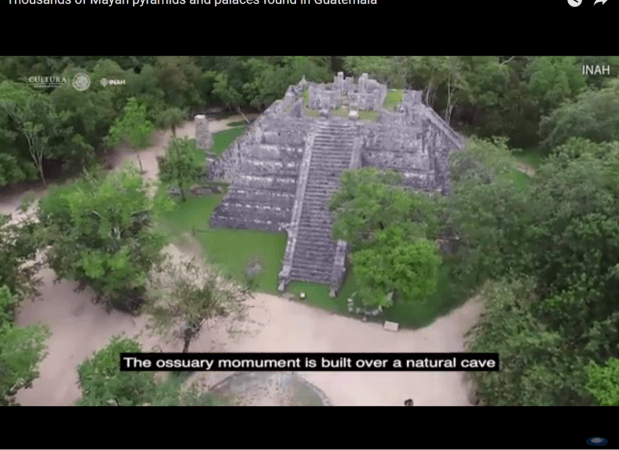
In a path-breaking discovery, more than 60,000 Mayan structures have been found lying hidden under jungle foliage in Guatemala. The historic remains include pyramids, houses, farms, causeways and palaces.
ALSO READ: Truck driver damages Nazca Lines, Peru's UNESCO World heritage site
Researchers used laser technology to explore under the forest canopy in northern Peten, a region close to the known Mayan cities.
The stunning new discovery of the sprawling pre-Columbian megalopolis is way more complex than the researchers had previously believed it to be.
This finding suggests that an advanced civilisation like that of the Chinese and Greek were also flourished in Central America, and it was at its peak 1,500 years ago.
ALSO READ: Ghostly figure appear in halo of light in a rare 'Brocken spectre' phenomenon
According to the assessments made previously, only 1 or 2 million people lived in the Maya lowlands, but the researchers now believe that around 15 to 20 million people inhabited on the landscape fortified with ramparts, defensive walls.
The fortresses found there point out that wars were quite frequent throughout their existence and not just at the end.
"I think this is one of the greatest advances in over 150 years of Maya archaeology," Stephen Houston, professor of Archaeology and Anthropology at Brown University, was quoted as saying by BBC.
"I know it sounds hyperbolic but when I saw the [Lidar] imagery, it did bring tears to my eyes," Houston said further.
This discovery unveiled a complex network of causeways which connect all the Maya cities in the region. The raised highways provided an easy passage at the time of the rainy season, as they were quite wide, which suggested that they were used for trade and were heavily trafficked.
ALSO READ: Amateur astronomer finds NASA satellite IMAGE 12 years after it goes missing
"The idea of seeing a continuous landscape, but understanding everything is connected across many square miles is amazing," Houston told BBC.
"We can expect many further surprises," he added.

The researchers used a technology called Lidar, which stands for light detection and ranging.
With the help of this technique, the researchers were able to find the outlines of dozens of newly found Maya cities which were hiding beneath the dense jungle foliage for centuries after they were abandoned by the original natives.
Watch Video:














